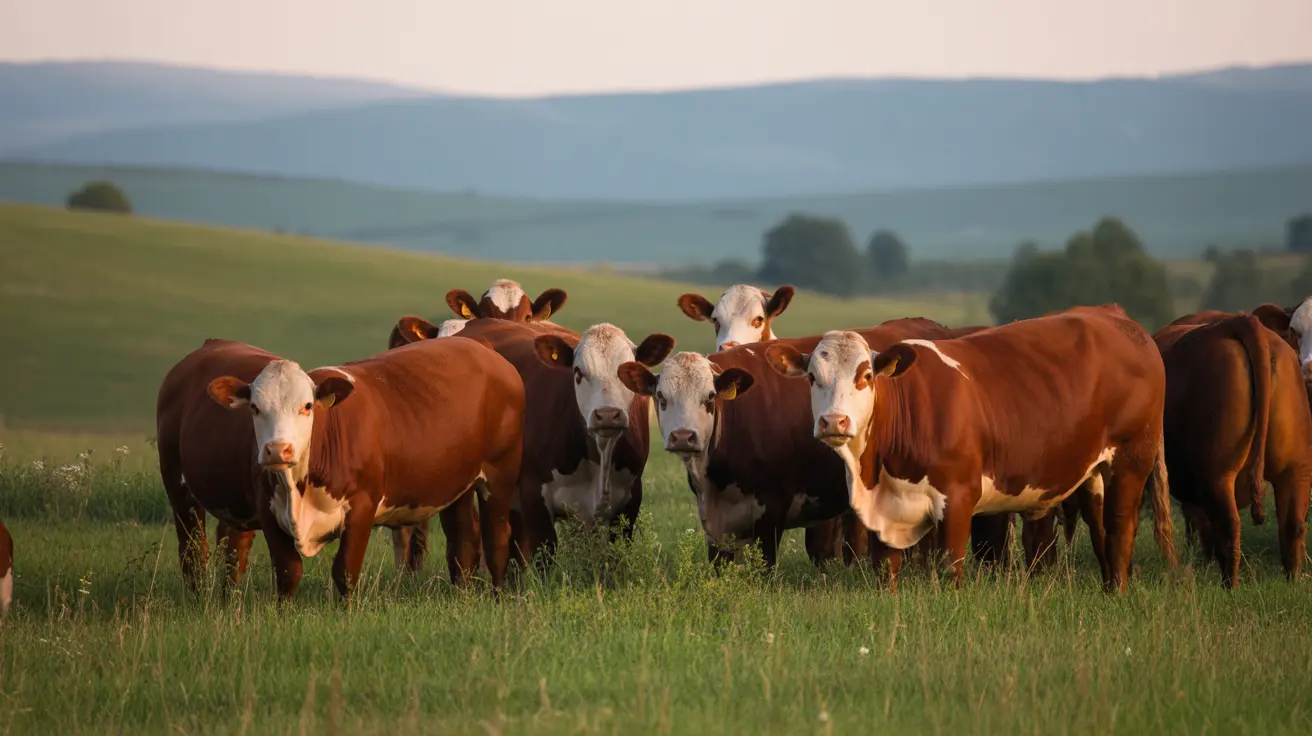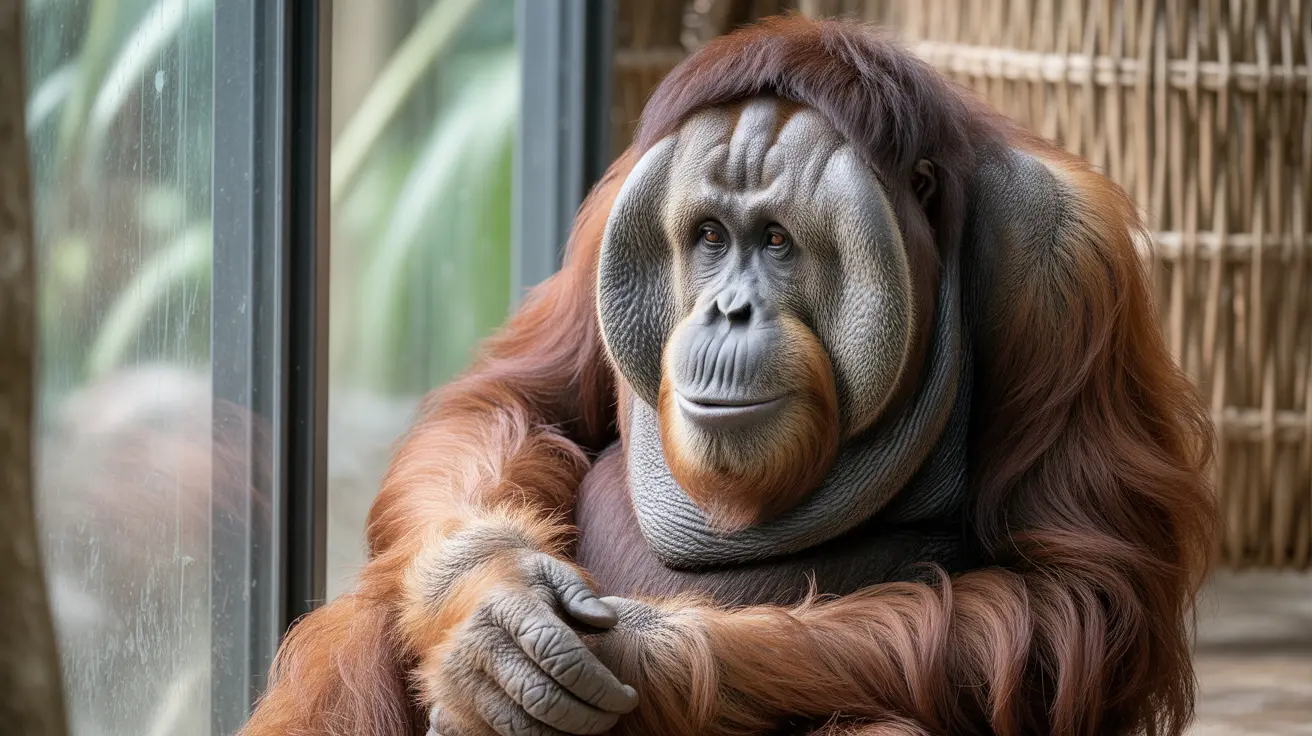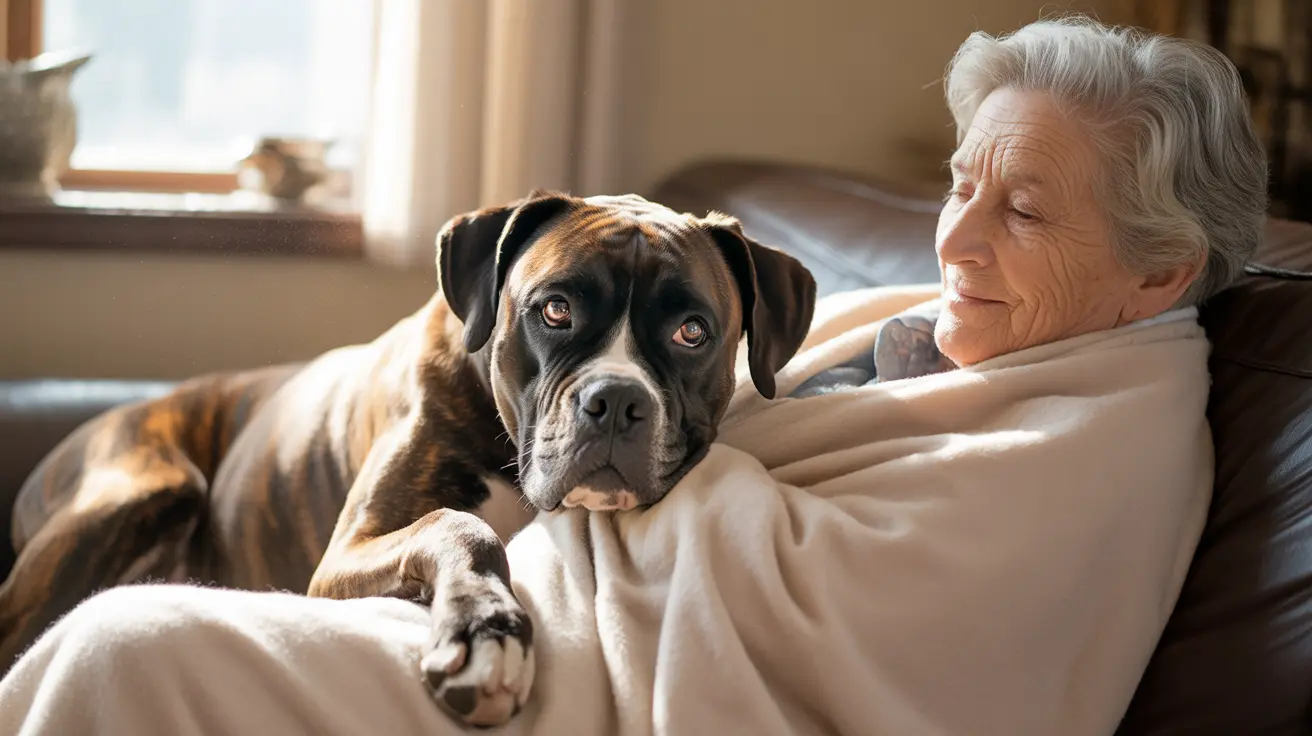German Longhair Cat Breed Care and Personality: A Complete Owner's Guide
The German Longhair cat breed represents one of Europe's most elegant yet rare feline treasures, combining stunning long-haired beauty with an exceptionally friendly temperament. This remarkable breed, originating from Germany, offers cat enthusiasts a perfect balance between the luxurious appearance of long-haired cats and the manageable care requirements that make them ideal for both first-time and experienced owners. With their silky coats, harmonious physique, and gentle nature, German Longhairs have captured the hearts of cat lovers seeking a medium to large breed that thrives in family environments.
Understanding German Longhair cat breed care and personality is essential for anyone considering this magnificent breed as their next companion. Despite their rarity, these cats offer unique advantages including exceptional adaptability to various living situations, minimal grooming needs despite their luxurious coat, and a temperament that makes them excellent with children and other pets. Whether you're drawn to their historical significance as one of only two German-origin cat breeds or their practical benefits as low-maintenance long-haired cats, this comprehensive guide will provide everything you need to know about welcoming a German Longhair into your home.
The Rich History and Origins of the German Longhair
The German Longhair's fascinating history dates back to the 19th century when longhair cats were primarily a luxury hobby for wealthy Europeans. During this era, the emergence of the Persian cat with its distinctive flat face began threatening the existence of the original longhair type that had developed naturally across Europe. This shift in breeding preferences nearly caused the extinction of the traditional European longhair cats that would later become known as the German Longhair.
In the 1930s, zoologist Friedrich Schwangart recognized the urgent need to preserve these original longhair cats and initiated efforts to revive the breed. He strategically named it the "German Longhair" to distinguish it from the increasingly popular Persian variety. The breed made its first official appearance at exhibitions in 1930 and began gaining recognition before World War II dramatically interrupted breeding programs across Europe.
The breed's modern revival began in the early 2000s when dedicated breeders launched comprehensive programs emphasizing health and genetic diversity. These revival efforts incorporated related breeds, including doll-faced European-style Persians and British Longhairs, to maintain a healthy gene pool while preserving the breed's original characteristics. The German Longhair achieved official recognition by the World Cat Federation (WCF) in 2012, marking a significant milestone in its journey from near-extinction to international recognition.
Physical Characteristics and Breed Standards
Body Structure and Size
The German Longhair exhibits a perfectly balanced physique that distinguishes it from other long-haired breeds. These medium to large cats feature a muscular, rectangular body with females typically weighing between 3.5 to 5 kilograms and males ranging from 4 to 6 kilograms. Their body structure demonstrates medium-heavy boning with a well-developed, round chest and solid neck, creating an overall impression of strength without heaviness.
The breed's legs are muscular and medium-length, supporting their substantial frame while maintaining elegant proportions. Their large, round paws feature distinctive tufts between the toes, adding to their overall charm. The tail is medium-long, broad at the base, and tapers gradually to a rounded tip with luxuriously plush, bushy fur that complements their overall silhouette.
Head Shape and Facial Features
The German Longhair's head presents a distinctive trapezoidal shape that is slightly longer than it is broad, featuring high cheekbones and a broad, blunt muzzle. The top of the head appears rounded or almost flat, with a gently sloping profile that ends in a medium-length Roman nose. This creates a harmonious facial structure that avoids the extreme features seen in some other long-haired breeds.
Their large, oval eyes are slightly slanted and set wide apart, contributing to their characteristically friendly and open expression. The medium-sized ears are broad at the base with rounded tips, positioned wide apart and tilted slightly forward, enhancing their alert and approachable appearance.
Coat Characteristics and Colors
The German Longhair's most striking feature is undoubtedly its magnificent coat, which ranges from medium-length to long with a distinctive silky sheen. The fur develops a thick undercoat during winter months, providing excellent insulation while maintaining its lustrous appearance. The coat features longer hairs that form an elegant ruff around the neck, create a bushy tail, and develop into longer hairs on the rear legs resembling traditional knickerbockers.
One of the breed's most appealing aspects is the incredible diversity of coat colors and patterns accepted in the breed standard. All typical feline colors and markings are recognized, including point coloration that originally entered the gene pool through crosses with Siamese-type cats in the 1930s. Eye colors can vary to complement the coat color, with all shades permitted, allowing for stunning combinations that reflect the breed's diverse genetic heritage.
Temperament and Personality Traits
Core Behavioral Characteristics
The German Longhair's personality represents one of its greatest assets, combining an even-tempered nature with genuine friendliness toward humans. These cats are notably people-focused and easy-going, yet they maintain the natural curiosity and playfulness that makes cats such engaging companions. Unlike some breeds that can become overly sedate, German Longhairs behave like normal cats without becoming phlegmatic or boring, striking an ideal balance for family life.
Their friendly disposition extends beyond just tolerance of human interaction to genuine enjoyment of family activities. This breed demonstrates remarkable adaptability, thriving equally well as indoor cats while also appreciating access to secured balconies or safe outdoor spaces when available. Their moderate activity level makes them suitable for various household dynamics, from quiet homes to busy family environments.
Social Behavior and Compatibility
German Longhairs excel in multi-pet households and show particular compatibility with children, making them exceptional family cats. Their patient nature and stable temperament allow them to handle the sometimes unpredictable behavior of young children with remarkable grace. When properly socialized, these cats typically coexist well with dogs, demonstrating the breed's adaptable and non-aggressive nature.
The breed's social flexibility extends to their interaction with other cats, making them ideal for households with multiple felines. This characteristic proves particularly beneficial for busy or working owners who want to ensure their cats have companionship during the day. Their ability to form strong bonds while maintaining their independence makes them well-suited to various family structures and lifestyles.
German Longhair Cat Breed Care Requirements
Grooming and Coat Maintenance
Despite their luxurious long coat, German Longhairs require surprisingly minimal grooming maintenance, defying common assumptions about long-haired cat care. The breed's coat texture naturally resists matting, making daily brushing unnecessary for most cats. During normal periods, occasional brushing maintains coat health and removes loose fur, while the spring molting season requires more frequent attention with brushing two to three times weekly.
The key to successful German Longhair grooming lies in understanding their seasonal coat changes and adjusting care accordingly. Their thick undercoat that develops during winter naturally sheds in spring, making this the most important time for consistent brushing. Using appropriate grooming tools designed for long-haired cats helps maintain the coat's silky texture and prevents the formation of any minor tangles that might develop.
Living Environment and Space Requirements
German Longhairs demonstrate remarkable adaptability to various living environments, thriving equally well in apartments and larger homes. As ideal indoor cats, they don't require extensive outdoor access to remain happy and healthy, though they appreciate secured balconies or supervised outdoor time when available. Their moderate activity level means they can adapt to smaller spaces provided they receive adequate mental stimulation and interaction.
Creating an enriching indoor environment for German Longhairs involves providing climbing opportunities, interactive toys, and comfortable resting areas that accommodate their medium to large size. Their social nature means they benefit from having elevated perches where they can observe household activities while having quiet retreat spaces for rest and relaxation.
Health Considerations and Veterinary Care
Breed Health Profile
German Longhairs enjoy a reputation for robust health, with breeders maintaining high standards for genetic diversity and selecting healthy parent animals for breeding programs. Currently, no breed-specific diseases have been identified in German Longhairs, a testament to the careful breeding practices employed during the breed's revival. This genetic health advantage makes them excellent choices for owners seeking long-haired cats without the hereditary concerns that affect some other breeds.
Modern German Longhair breeders commonly conduct genetic disease testing and comprehensive health screening, including heart and kidney ultrasounds, ensuring breeding cats meet high health standards. These proactive measures contribute to the breed's overall health profile and help maintain the genetic diversity necessary for long-term breed viability.
Routine Healthcare Needs
Like all cats, German Longhairs require standard veterinary care including regular vaccinations, annual health checks, and routine parasite prevention. Their generally robust constitution doesn't eliminate the need for preventive healthcare, but it does mean owners can focus on maintaining good health rather than managing breed-specific conditions.
Regular veterinary monitoring helps identify any normal cat diseases or health issues early, ensuring German Longhairs maintain their characteristic vitality throughout their lives. Establishing a relationship with a veterinarian familiar with the breed's characteristics can be beneficial, though their straightforward health needs make them manageable for most experienced small animal veterinarians.
Feeding and Nutrition Guidelines
German Longhairs have straightforward nutritional needs typical of medium to large cat breeds, requiring high-quality cat food appropriate for their life stage and activity level. Their substantial size means they may consume more food than smaller breeds, but their moderate activity level prevents the excessive caloric needs seen in some highly active breeds. Providing measured portions helps maintain their ideal weight and muscular condition.
Due to their thick coat, German Longhairs may benefit from diets rich in omega fatty acids that support coat health and maintain the silky texture that characterizes the breed. Fresh water should always be available, particularly given their size and the potential for increased needs during seasonal coat changes when their bodies work to maintain their luxurious fur.
Finding and Selecting a German Longhair
Locating Reputable Breeders
Due to the breed's rarity, finding German Longhair cats requires patience and research to locate reputable breeders specializing in the breed. Responsible breeders typically charge between 900 to 1,000 pounds, reflecting the careful breeding programs necessary to maintain the breed's health and characteristics. These breeders provide species-appropriate accommodations for kittens and parents, complete documentation, and ensure kittens receive proper veterinary care before placement.
Quality German Longhair breeders maintain detailed health records, conduct genetic testing, and can provide information about the kitten's parents and lineage. They ensure kittens are properly vaccinated, microchipped, and dewormed before being handed over to new families, demonstrating their commitment to kitten welfare and breed preservation.
Alternative Adoption Options
While less common, German Longhairs occasionally appear in animal shelters and rescue organizations, offering potential adoption opportunities for prospective owners. Pedigree cats sometimes end up in shelters due to owner circumstances, making shelter adoption a viable option for those willing to be patient and monitor available cats regularly.
Working with breed-specific rescue organizations or maintaining contact with German Longhair breeder networks can help identify adoption opportunities when they arise. These connections often prove valuable for finding older cats or those seeking new homes due to changing family circumstances.
Frequently Asked Questions
How much grooming do German Longhairs actually need?
German Longhairs require surprisingly minimal grooming despite their long coat. During normal periods, occasional brushing is sufficient, with increased frequency to two to three times weekly only during the spring molting season. Their coat naturally resists matting, making daily brushing unnecessary.
Are German Longhairs good with children and other pets?
Yes, German Longhairs are excellent with children due to their friendly, even-tempered nature and patient disposition. They also coexist well with other cats and, when properly socialized, typically get along well with dogs, making them ideal family pets.
What is the size range for German Longhairs?
German Longhairs are medium to large cats, with females typically weighing between 3.5 to 5 kilograms and males ranging from 4 to 6 kilograms. They have a muscular, well-balanced build with medium-heavy boning.
Do German Longhairs have any breed-specific health problems?
Currently, no breed-specific diseases have been identified in German Longhairs. The breed enjoys robust health due to careful breeding practices that emphasize genetic diversity and health screening, making them generally healthy cats requiring only standard veterinary care.
Can German Longhairs live in apartments?
Absolutely. German Longhairs are ideal indoor cats that adapt well to apartment living. While they appreciate secured balconies or supervised outdoor access when available, they don't require extensive outdoor space to remain happy and healthy.
How rare are German Longhairs and where can I find one?
German Longhairs are extremely rare cats, requiring patience to locate reputable breeders specializing in the breed. They typically cost between 900 to 1,000 pounds from responsible breeders, though they occasionally appear in shelters and rescue organizations.
What colors do German Longhairs come in?
German Longhairs accept all typical feline colors and patterns, including point coloration. Eye colors can vary to complement the coat color, with all shades permitted. This diversity reflects the breed's rich genetic heritage and adds to their visual appeal.
Conclusion
The German Longhair cat breed represents an exceptional choice for cat enthusiasts seeking a beautiful, friendly, and manageable long-haired companion. Their remarkable combination of stunning appearance, easy-going temperament, and surprisingly low-maintenance care requirements makes them ideal for both first-time cat owners and experienced feline enthusiasts. Understanding German Longhair cat breed care and personality reveals a breed that offers the visual appeal of traditional European longhair cats while providing the practical benefits of robust health, minimal grooming needs, and excellent adaptability to various living situations.
While their rarity means acquiring a German Longhair requires patience and research, the reward is a loyal, friendly companion that thrives in family environments and brings years of joy with minimal specialized care. Their balanced nature, combining the elegance of long-haired breeds with the practicality of easy maintenance, positions them as an ideal choice for modern cat owners seeking a distinctive yet manageable feline companion. For those fortunate enough to welcome a German Longhair into their home, they'll discover a breed that perfectly balances beauty, personality, and practicality in one remarkable package.






